


028 38 352640
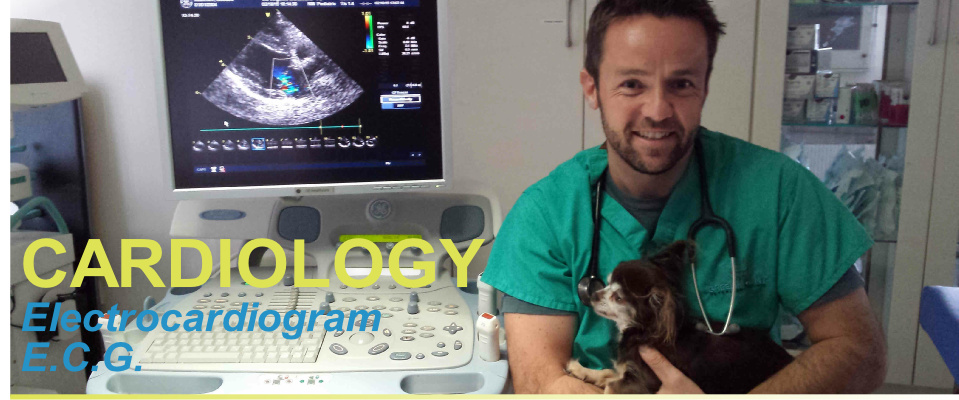
What is an electrocardiogram (ECG) test in dogs and cats?
An ECG is a measurement or trace of the electrical activity from the heart measured at the surface (skin ) of the animal. (We think that it’s quite clever that we can measure this activity of the heart at the skin surface!!).
As our heart beats it generates a voltage which can be measured using an ECG recorder.
The heart conducts the electrical impulse through the muscle cells and it is this
electrical stimulus that causes the heart muscle cells to contract and cause the
heart to beat. An ecg measures this electrical activity in millivolts (mv) and produces
a characteristic trace. The diagram below shows a typical trace.
How is an electrocardiogram (ECG) performed in dogs and cats?
An ecg is performed with the dog or cat awake, not sedated as most sedatives will
slow the heart and can even cause irregularities of rhythm. Your animal will have
sticky electrodes or clips attached to their skin and an ecg trace will be taken.
We have recently started to use more comfortable clips that do not pinch the skin
too much and our patients seem to tolerate these much better.
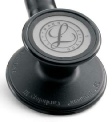
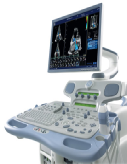
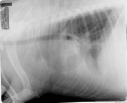
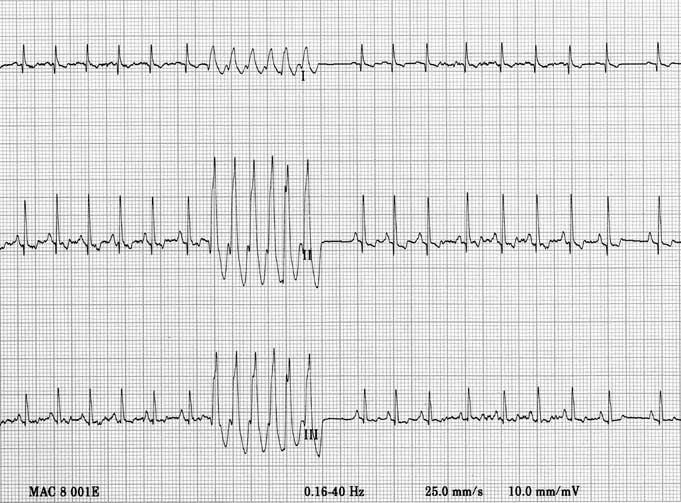

Contact Us
Greenmount Veterinary Clinic
72 Gilford Road,
Portadown, Co Armagh,
BT63 5EG
Tel: 028
38 358525/352640
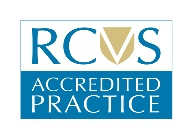


If your pet is suffering from symptoms arising from a heart murmurs, breathing problems, collapsing or any other condition you fear may be causing them distress or harm, contact us any time, night or day, on our normal number to arrange to be seen by our emergency vets: 028 38 358525.
An appointment to be seen by Neil can then be scheduled as soon as possible.
What information can the vet obtain from an electrocardiogram (ECG) test in your dog or cat?
ECGs are primarily used for assessment of heart rhythm, irregular rhythms known as arrhythmias are broken down into tachyarrhythmias (too fast) or bradyarrhythmias (too slow). Further distinctions can be made depending on whether the arrhythmias originates in the atria or ventricles.
ECGs can also give an indication of heart chamber size although chamber size is more
accurately measured using echocardiography.
What treatment is available for these canine and feline conditions diagnosed by an electrocardiogram (ECG)?
Various antiarrhythmic drugs are available to help to control the heart rhythm, however we have to be careful as some of these drugs are capable of causing arrhythmias by themselves.
For some bradyarrhythmias such as heart block then the treatment of choice would
be insertion of a pacemaker to speed up and control the heart rate.
Telephone 028 38 358525 to speak with Neil Walmsley to arrange an examination or to discuss a case
Website content owned and produced by Ewing Walker, Ewing may be contacted through Greenmount Veterinary Clinic or VetOrtho Referrals. Copyright © All rights reserved. Ewing Walker Greenmount Vets
| pet grooming |
| fleas & ticks |
| pet microchip |
| pet insurance |
| pet worming |
| pet neutering |
| vaccinations |
| dogs trust scheme |
| dog neuter for £15 |
| rabbits |
| cats |
| dogs |
| dental treatments |
| spinal xray myelogram |
| GSDA A stamp |
| elbow score |
| hip score |
| hip score guide for owners |
| our healthy pet offers |
| vetortho.co.uk |
| Fracture Surgery |
| Cruciate Surgery TTA TPLO |
| Hip Dysplasia |
| Spinal Surgery |
| Elbow Dysplasia |
| Cardiology services offered |
| Doppler heart scan |
| Blood pressure monitoring |
| Electrocardiogram ECG |
| Holter monitoring |
| Bronchoscopy & Endoscopy |
| ophthalmology referrals |
| cataract surgery |
| eye-vet |